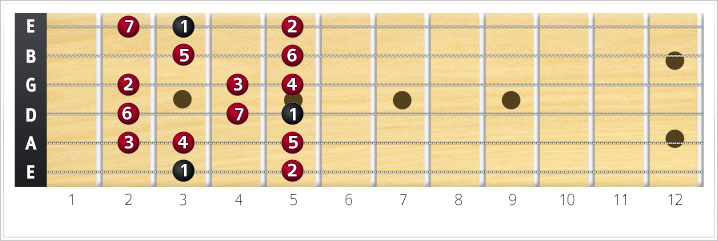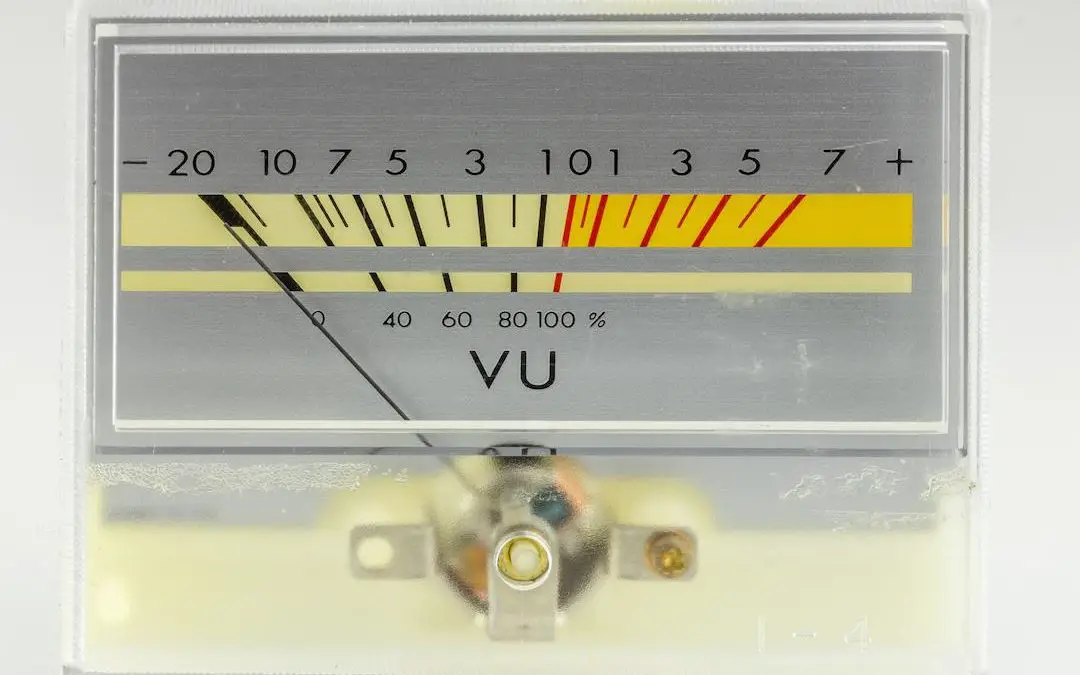Calling all aspiring guitar gods and goddesses! Are you tired of feeling like a musical fish out of water? Do your fingers fumble on the fretboard more than a toddler with a Rubik’s cube? Fear not, fellow strummers, for we bring good news. In this article, we will dive into the world of essential scales every guitarist must know to truly master their craft. So grab your axe, set aside your air guitar, and let’s get shredding! Major Scale: Foundation of Western Music”>
Major Scale: Foundation of Western Music”>
Contents
- 1 Exploring the Major Scale: Foundation of Western Music
- 2 The Minor Scale: Expressing Emotion through Modulation
- 3 The Pentatonic Scale: Simplifying Soloing for Guitarists
- 4 Mastering the Blues Scale: Capturing the Heart of Blues Music
- 5 Harmonic Minor Scale: Adding Exotic Flavors to Your Play
- 6 The Modes: Expanding Your Musical Vocabulary
- 7 Applying Scales in Practical Contexts: Tips for Improvisation and Composition
- 8 FAQs
- 9 Rock On!
Exploring the Major Scale: Foundation of Western Music
Welcome to the wacky world of the Major Scale, where seven notes rule the roost in Western music! Like the Avengers of the musical universe, these seven notes come together to create harmonies, melodies, and the backbone of all your favorite songs. Let’s dive in and explore this powerhouse of a scale.
First up, we have the **root note**, the big cheese of the Major Scale. This note sets the tone (literally) for the entire scale and gives it its distinct flavor. Think of it as the captain of the ship, guiding the other notes along on their musical journey.
Next, we’ve got the **whole-whole-half-whole-whole-whole-half** formula that defines the Major Scale. It’s like the secret recipe that makes this scale so tasty to our musical ears. Following this magical formula, we can create the Major Scale in any key, from C major to G# major and beyond!
As we journey through the Major Scale, we’ll encounter its best buddies – the **diatonic chords**. These chords are like the entourage of the scale, supporting it and adding depth to its musical tapestry. From the triumphant I chord to the mysterious vi chord, these diatonic chords are the yin to the Major Scale’s yang.
The Minor Scale: Expressing Emotion through Modulation
Have you ever been transported to a world of sadness, longing, or mystery when listening to music? Chances are, you were experiencing the magic of the minor scale! This versatile scale possesses the power to evoke a wide range of emotions, making it a favorite tool of musicians looking to tug at heartstrings and stir the soul.
One of the amazing things about the minor scale is its ability to seamlessly modulate between different keys, adding depth and complexity to musical compositions. Through subtle shifts in tonality, musicians can create a rollercoaster of emotions that keep listeners on the edge of their seats. Whether it’s a haunting melody in A minor or a melancholic tune in E minor, the minor scale knows how to hit you right in the feels.
So, how can you harness the power of the minor scale to express emotion through modulation in your own music? Here are a few tips to get you started:
- Experiment with different minor scales: From natural minor to harmonic and melodic minor, each variation of the minor scale brings its own unique flavor to the table. Explore different scales to find the perfect fit for the emotion you want to convey.
- Use modal interchange: Mix and match chords from different minor scales to create unexpected harmonic shifts that add intrigue and depth to your music.
- Add chromaticism: Spice up your melodies with chromatic notes borrowed from outside the minor scale, adding tension and drama to your compositions.
 Pentatonic Scale: Simplifying Soloing for Guitarists”>
Pentatonic Scale: Simplifying Soloing for Guitarists”>
The Pentatonic Scale: Simplifying Soloing for Guitarists
Let’s face it, soloing on the guitar can be intimidating. So many scales, so many notes – where do you even begin? Well, fear not my fellow guitarists, because the pentatonic scale is here to simplify your soloing woes!
So what exactly is the pentatonic scale, you ask? It’s a five-note scale that miraculously manages to sound good no matter where you play it on the fretboard. That means less thinking, more rocking out!
With the pentatonic scale, you can say goodbye to those days of endlessly searching for the right notes. Just stick to the five notes of the scale and watch your solos effortlessly come to life. Trust me, it’s like magic for your fingers!
And the best part? The pentatonic scale is so versatile that you can use it in virtually any musical genre. From blues to rock to pop, this scale has got your back. Say farewell to boring solos and hello to epic guitar shredding!

Mastering the Blues Scale: Capturing the Heart of Blues Music
So you want to be a blues master, huh? Well, you’ve come to the right place! The blues scale is like the secret sauce that gives blues music its soulful flavor. It’s the key to capturing the heart of this iconic genre, so buckle up and get ready to dive deep into the world of blues.
First things first, let’s talk about the basics. The blues scale is a six-note scale that adds a distinctive sound to your playing. By mastering this scale, you’ll be able to evoke all the passion, pain, and grit that defines blues music. So grab your guitar, harmonica, or whatever instrument you fancy, and let’s get down to business.
Now that you understand the importance of the blues scale, it’s time to start practicing. Here are a few tips to help you along the way:
- Listen to the greats: Study the masters like B.B. King, Muddy Waters, and Stevie Ray Vaughan to hear the blues scale in action.
- Experiment with phrasing: Play around with different rhythms and note combinations to create your own unique blues sound.
- Feel the music: Don’t just play the notes, channel the emotion behind the music and let it flow through you.
Remember, mastering the blues scale is a journey, not a destination. So keep practicing, keep experimenting, and most importantly, have fun with it. Before you know it, you’ll be wailing away on your instrument like a true blues aficionado. And who knows, maybe one day you’ll even earn the title of blues master yourself.
 Minor Scale: Adding Exotic Flavors to Your Play”>
Minor Scale: Adding Exotic Flavors to Your Play”>
Harmonic Minor Scale: Adding Exotic Flavors to Your Play
So, you want to spice up your music with some exotic flavors, huh? Look no further than the Harmonic Minor Scale! This bad boy is like adding a dash of cayenne pepper to your bland musical dish. Trust me, your listeners will be begging for seconds.
Butterfly Eqyptian Princess
Currently the most powerful cards in Duel Links are Destiny Draw and Amazoness Queen. Destiny Draw gives the player a card of his choice from his deck (at the expense of losing 2000 life points). Amazoness Queen during the opponents’ turn makes all Amazonesses invulnerable to enemy card effects. This can be chained with Amazoness Swords Woman who deals damage to the enemy every time your Amazoness monster is challenged. But protecting Amazoness Queen with Princess is just 🤯🤯🤯 insane.
Forget about your basic major and minor scales – those are so yesterday! The Harmonic Minor Scale is here to take your music to new heights. With its unique intervals and spicy dissonances, you’ll have your audience on the edge of their seats, wondering what you’ll throw at them next.
So go ahead, give the Harmonic Minor Scale a try. It’s like adding a pinch of saffron to your musical masterpiece - unexpected, bold, and oh so delicious. Your music will never be the same again!
The Modes: Expanding Your Musical Vocabulary
Have you ever felt stuck in a musical rut, playing the same old chords and melodies on repeat? Fear not, dear reader, for the modes are here to rescue you from monotony! These unique musical scales will add a whole new dimension to your playing, expanding your vocabulary and pushing your creativity to new heights.
Each mode has its own distinct flavor and feel, offering a fresh perspective on the familiar notes you already know and love. From the hauntingly beautiful sound of the Dorian mode to the exotic and mysterious Phrygian mode, the options are endless. Say goodbye to boring old major and minor scales – it’s time to spice things up with the modes!
So how exactly do you incorporate these modes into your musical arsenal? Well, the key is to experiment and play around with different combinations of notes, creating unique and interesting melodies that will leave your audience in awe. Don’t be afraid to step outside your comfort zone and try something new – after all, that’s where true creativity lies!
So go ahead, grab your instrument of choice and dive headfirst into the world of modes. Whether you’re a seasoned musician looking to expand your horizons or a beginner eager to learn something new, the modes are sure to take your playing to the next level. So what are you waiting for? Let’s get creative!
Applying Scales in Practical Contexts: Tips for Improvisation and Composition
When it comes to applying scales in practical contexts, improvisation and composition can feel like walking a tightrope while juggling flaming batons. But fear not, fellow musicians, for I have some tips to make the process a little less daunting and a lot more fun!
First off, don’t be afraid to experiment with different scales. Mix things up by combining the tried-and-true major and minor scales with more exotic options like the blues scale or the whole tone scale. Who knows, you might stumble upon a new favorite that ignites your creativity like never before!
Another tip for improvisation and composition is to play around with rhythm. Don’t just mindlessly run up and down scales in a robotic fashion. Instead, try experimenting with syncopation, accents, and different time signatures to give your music that extra oomph. Trust me, your audience will thank you for keeping things interesting!
And last but not least, don’t forget to have fun! Music is all about expression and emotion, so don’t get bogged down in technicalities. Let your creativity run wild, embrace the unexpected, and who knows, maybe you’ll discover a whole new world of musical possibilities just waiting to be explored.
FAQs
How can scales improve my guitar playing?
Scales are like the secret spices that make your guitar playing sound delicious. They help you understand the language of music, improve your finger dexterity, and make your solos sound oh-so-sweet. Plus, chicks dig guitarists who know their scales.
Do I need to learn all the scales or just a few?
Learning all the scales is like having a full spice rack in your kitchen – you might not use every spice every day, but having them all gives you endless flavor possibilities. Start with the essential scales and practice them until you can play them in your sleep. Then, feel free to explore the more exotic scales when you’re feeling adventurous.
How often should I practice scales?
Practice makes perfect, so try to squeeze in some scale practice every day. Even just 10-15 minutes a day can make a huge difference in your playing. If you find yourself with some free time, whip out your guitar and get those scales under your fingers. Your future self will thank you.
What are some essential scales every guitarist should know?
Oh, I’m glad you asked! The major scale, minor scale, pentatonic scale, and blues scale are like the Fab Four of guitar scales. Mastering these scales will give you a solid foundation for playing virtually any style of music. So put on your musical hard hat and get to work!
Can scales be fun to practice?
Absolutely! Think of scales as your musical playground. Experiment with different ways to play them, add in some cool rhythms, or even try improvising over a backing track. The more you explore and have fun with scales, the more you’ll enjoy practicing them. Who said learning had to be boring?
Rock On!
Congratulations on making it through our crash course on essential guitar scales! Now go forth and channel your inner guitar god with these must-know scales. Just remember, practice makes perfect, so keep strumming those strings and soon enough, you’ll be shredding like a pro. Happy playing!



